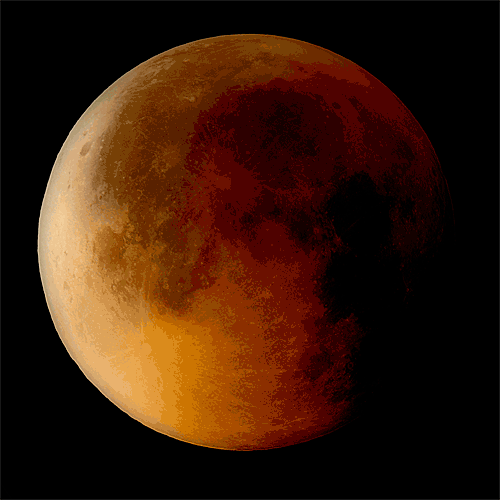I took some photos of the total lunar eclipse last night from my backyard. At the peak of the eclipse, when the moon was totally in the Earth’s shadow, no direct sunlight reached the moon so it was lit only faintly by light refracting (bending) through the relatively thin layer of the Earth’s atmosphere. As this refracted light passes through smoke, dust, smog and haze in the atmosphere, it takes on a distinct red tint. Since direct light reaching the moon is whitish-yellow and is many orders of magnitude stronger than the red-tinged refracted light, the red color is only observed at total eclipse when it does not have to compete with direct sunlight. Thus comes the name “blood moon” for such an eclipse. Click the panorama strip to see it larger.
Lunar eclipse sequence, showing total eclipse (left) through full moon (right). While the moon lies in the full shadow of the earth (umbra) it receives only faint, red-tinged light refracted through the Earth’s atmosphere. As the moon passes into the penumbra it receives increasing amounts of direct sunlight, eventually leaving the shadow of the Earth altogether. August 28, 2007.
Image ID: 19391
Location: Earth Orbit, Solar System, Milky Way Galaxy, The Universe
For some reason this animated GIF looks terrible compared to the actual images out of the camera, something about limiting to 256 colors I think. Anyway, here is an animated version, over roughly one and 1/2 hours from full eclipse to no eclipse:





